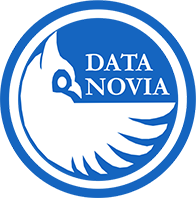Introduction
Object-Oriented Programming (OOP) is a programming paradigm that uses ‘objects’ – data structures encapsulating data and functions – to design applications. OOP in Python enables you to write modular, reusable, and organized code, which is particularly beneficial for large-scale projects. In this tutorial, we’ll explore the core concepts of OOP including classes, objects, inheritance, and polymorphism.
What is OOP?
At its core, OOP is centered around the idea of creating classes that serve as blueprints for objects. These objects combine data (attributes) and behaviors (methods), allowing you to model real-world entities in your programs. The key benefits of OOP include improved code reusability, better organization, and easier maintenance.
Core Concepts of OOP
Classes and Objects
Class:
A blueprint for creating objects. It defines a set of attributes and methods that the created objects (instances) will have.Object:
An instance of a class. Each object can have unique attribute values while sharing the same methods defined by its class.
Inheritance
Inheritance allows one class (called a subclass or child class) to inherit attributes and methods from another class (called a superclass or parent class). This promotes code reuse and can simplify complex systems.
Polymorphism
Polymorphism allows objects of different classes to be treated as objects of a common superclass. It enables methods to be defined in multiple ways, providing flexibility and the ability to use a unified interface for different underlying forms (data types).
Python OOP in Action
Below is an example that demonstrates the creation of a class, instantiation of objects, inheritance, and polymorphism in Python.
# Define a base class called Animal
class Animal:
def __init__(self, name):
self.name = name
def speak(self):
return "Some generic sound"
# Define a subclass Dog that inherits from Animal
class Dog(Animal):
def speak(self):
return "Woof!"
# Define another subclass Cat that inherits from Animal
class Cat(Animal):
def speak(self):
return "Meow!"
# Create instances of Dog and Cat
dog = Dog("Buddy")
cat = Cat("Whiskers")
# Demonstrate polymorphism: both objects use the 'speak' method in their own way
print(f"{dog.name} says: {dog.speak()}")
print(f"{cat.name} says: {cat.speak()}")When to Use OOP
OOP is especially useful when you need to model complex systems or applications that benefit from a modular structure. Some common use cases include:
Software Development:
Building large-scale applications that require organized code and reusable components.Game Development:
Modeling game entities and interactions.GUI Applications:
Designing interactive interfaces with multiple components that share behaviors.
Conclusion
OOP in Python offers a powerful approach to organizing your code and modeling real-world scenarios. By understanding classes, objects, inheritance, and polymorphism, you’ll be equipped to write more modular and maintainable applications. Continue to explore more advanced examples and experiment with your own classes to fully grasp the potential of OOP.
Further Reading
- Python for Beginners: Your First Script
- Syntax and Variables in Python
- Functional Programming in Python
Happy coding, and enjoy exploring the power of Object-Oriented Programming in Python!
Explore More Articles
Here are more articles from the same category to help you dive deeper into the topic.
Reuse
Citation
@online{kassambara2024,
author = {Kassambara, Alboukadel},
title = {Object-Oriented {Programming} {(OOP)} in {Python}},
date = {2024-02-05},
url = {https://www.datanovia.com/learn/programming/python/advanced/object-oriented-programming.html},
langid = {en}
}
